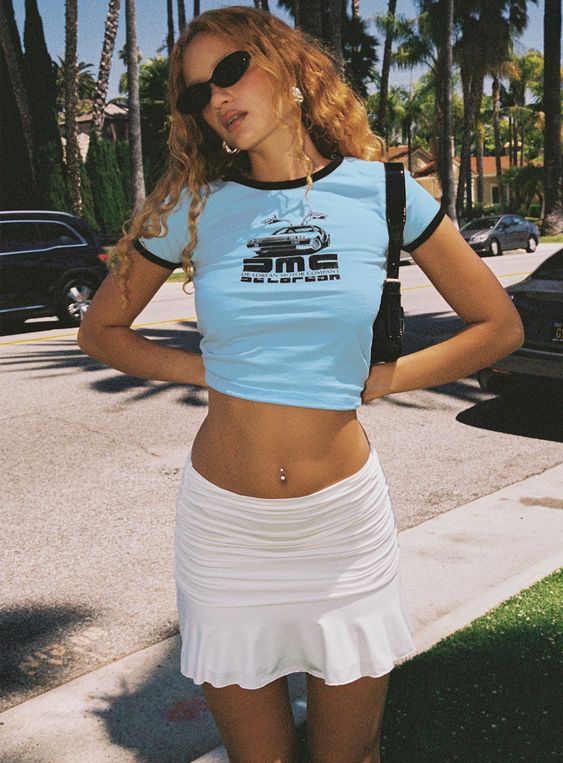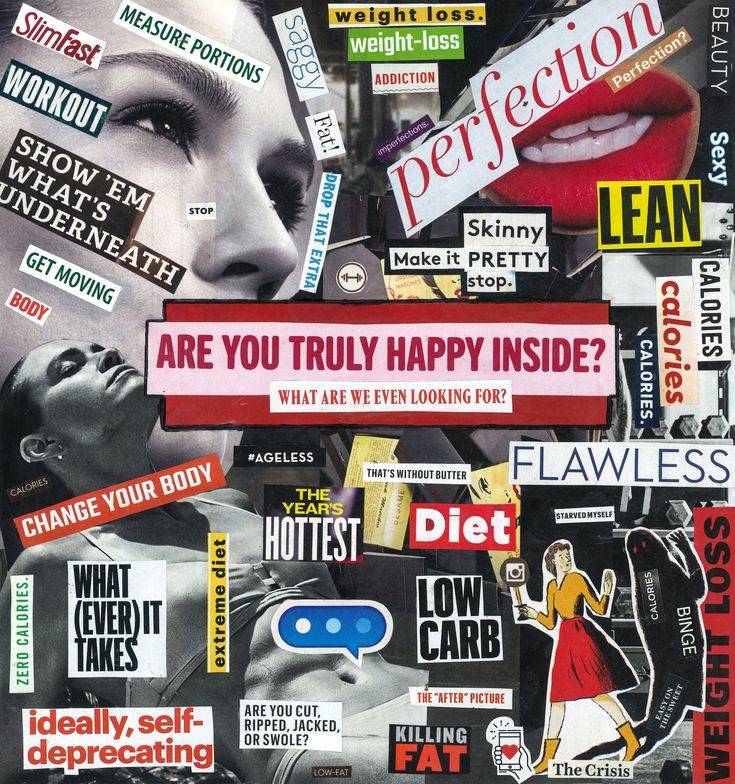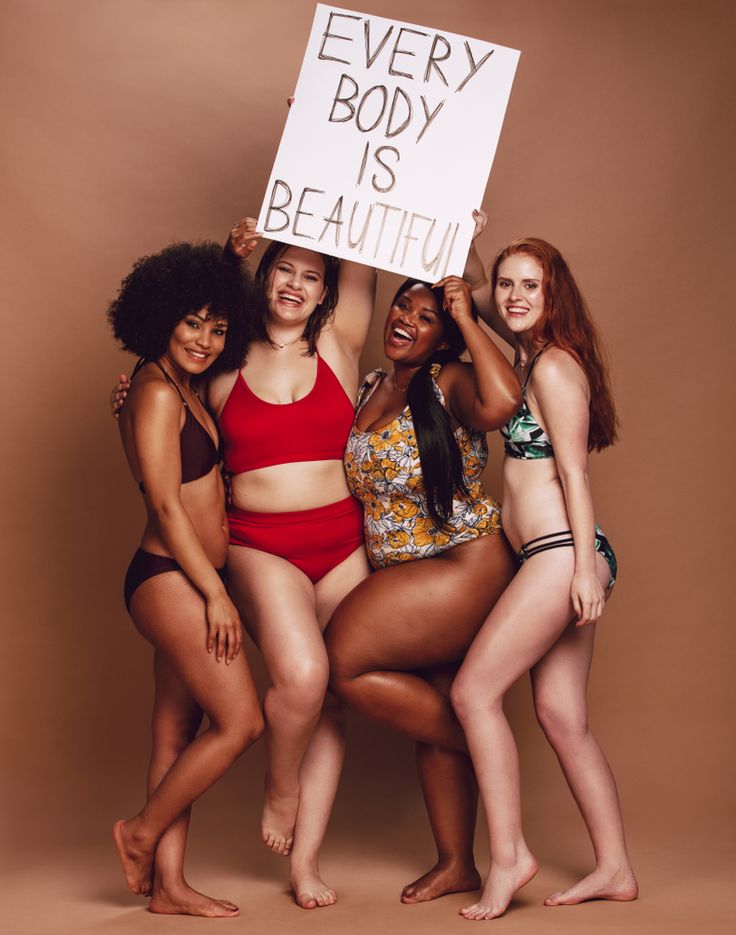You’re in bed, scrolling on TikTok after a long day. You’re flipping through apartment tours, OOTDs, and Kamala Harris memes when you get your first ad of the night: “Ladies, give me 30 days and I’ll snatch your waist and grow your glutes.”
Okay, cool, you were already feeling slightly guilty about skipping your workout today, but no worries, you can wake up early and go to the gym before work.
You get another ad.
“This greens powder helped me lose my bloat and flatten my stomach in two weeks.”
Okay, now you’re hyper-aware of how your pajama shorts dig into your belly. Are you bloated? Should you try greens powder?
You keep scrolling.
“I don’t know why anyone would walk around un-snatched when these OQQ bodysuits — that barely fit my thigh! — bring your waist down two inches.”
But wait a second — that influencer already seems to have a flat stomach and a tiny waist. Why would they be the model in this ad? And why would they want to make their waist smaller in the first place?
And it’s not just the ads. It’s the, “If you can’t see my waist it’s because I had an iced coffee for lunch” trend and Liv Schmidt’s controversial “What I Eat In A Day To Stay Skinny.”
Not only are skipping meals and counting calories returning to the mainstream, but they’re returning as social media trends — something that garners mass engagement and — in our culture of competitive comparison — are oh so tempting to replicate.
Lately, it’s been challenging to enter any shared internet space without becoming extremely conscious of what your body looks like and how it compares to the bodies of those who get the most likes and recognition on social media.
And while women have been confronted with these standards since the beginning of time — or at least since Carrie Bradshaw lived only on cigarettes and cosmos — the consistent crawl toward tiny-waist worship begs the question: has the body-positive movement regressed? And could this have anything to do with the return of Y2K fashion, which stems from an era where Tyra Banks rejected plus-sized models, where heroin chic reigned supreme, where Jessica Simpson’s body was analyzed under a microscope on the cover of every magazine?
Let’s take a look.
Examining The Return of Y2K Fashion
In the late 1990s and early 2000s, fashion trends were heavily influenced by pop culture, music videos and celebrity styles. Icons like Britney Spears, Christina Aguilera, and Paris Hilton set the tone for what was considered fashionable. This era was marked by a distinct set of clothing items, many of which emphasized a very slim, toned body:
- Low-Rise Jeans: These jeans, often paired with crop tops, exposed midriff and hips, make a flat stomach and narrow waist highly desirable.
- Crop Tops and Tube Tops: These tops are often skin-baring and made with very little fabric, emphasizing the midsection.
- Mini Skirts and Dresses: Short hemlines emphasized slim legs and a petite frame.
- Tight-Fitting Apparel: Items that clung to the body, accentuating a slim silhouette, were also generally popular in the late 90s and early 2000s.
Most — if not all — of these styles made a comeback in the past few years. This resurgence strongly emphasizes a similar body standard — one with a flat stomach, narrow hips and protruding collar bones.
This renewed trend may bring heightened awareness of one’s physical appearance which can, on its own, trigger negative emotions and feelings of exclusion from the seemingly “accepted” body standard.
Moreover, social media platforms amplify comparison culture, where users constantly compare themselves to influencers and celebrities who epitomize the ideal body type for Y2K fashion. Therefore, the resurgence of y2k fashion in mainstream and social media can also lead to pressure to conform to these trends — and the pressure to sustain the body type that best suits these trends at any cost, whether extreme dieting or excessive exercise.
Will The Return of Y2K Trends Have A Cultural Impact On Body Standard?
Sure, trends come and go. However, the resurgence of Y2K body standards will likely have a serious impact on both individuals and American culture at large for years to come.
Teenagers and young adults, both highly impressionable and highly active on social media, are particularly vulnerable to these revived standards. The pressure to fit into Y2K fashion trends can contribute to body dissatisfaction from a young age, leading these impressionable generations to establish unhealthy behaviors and toxic thought patterns early on — which we aging generations know are difficult to unlearn.
More often than not, brands and marketers capitalize on these trends, promoting products that promise to help consumers achieve the ideal body type. This commercialization of body image issues shifts the focus from promoting genuine body acceptance to selling a solution, exploiting insecurities for profit.
Especially considering that many TikTokers make their living on the app, the pressure to conform to these standards and win (and maintain) promising sponsorships is more prevalent than ever.
Promoting Healthy Body Image Moving Forward
While the state of American body standards seems dire, there are ways to combat the regressive impact of Y2K fashion’s resurgence moving forward.
By embracing and promoting diverse body types and supporting brands and influencers who prioritize inclusivity, we can begin to dismantle the narrow standards perpetuated by past and present trends.
Celebrating different body types will help challenge the idea that only certain bodies are “fashionable” and holding brands and influencers accountable is crucial for demanding a shift toward more ethical marketing practices.
On an individual level, remember to stay mindful of the content you engage with. Question unrealistic standards and stay wary of filters and effects that may dramatically alter a person’s appearance.
Perhaps most importantly, continuing the conversation about genuine body positivity is essential. While the algorithm may seem unpredictable and largely out of our control, as consumers, we can choose to support content that uplifts rather than critiques — all while advocating for change in the way body image is represented.
Let’s make sure that the return of Y2K fashion doesn’t bring back the toxic body standards of the past but instead encourages a more inclusive and diverse understanding of beauty.








